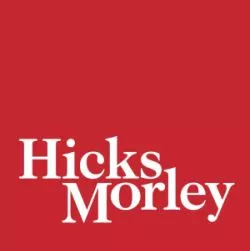Welcome to our newest edition of the School Board Update.
In this Update we review a recent decision from the Human Rights Tribunal of Ontario (Tribunal) concerning allegations of discrimination with respect to educational services because of sex and gender identity contrary to the Ontario Human Rights Code (Code).
We hope you find this summary of interest.
Tribunal Finds No Discrimination Experienced by Student as a Result of Classroom Discussion on Gender Identity and Gender Expression
InN.B v. Ottawa-Carleton District School Board, the Tribunal dismissed an application brought by the mother of a then-grade-one student (N.B.) attending an elementary school at the respondent school board, who, the mother claimed, had experienced adverse impact discrimination as a result of statements made by her teacher.
Background
The application alleged that in March of 2018, N.B. shared with her parents that, according to her teacher, there was no such thing as girls and boys. She also stated that she did not want to be a mother when she grew up and would prefer to have a dog, and referenced that people could go to a doctor to change their bodies. N.B. was also observed by her parents drawing a linear gender spectrum when playing with her teddy bears.
N.B.'s parents contacted the school board and expressed their concern about what had been said in N.B.'s classroom. They claimed that the teacher's comment created a poisoned learning environment for N.B. by denying her status as a girl, caused N.B. adverse impact as a cisgender female and made her question her identity. To these concerns, N.B.'s teacher explained that her lessons were compliant with the school board's approach to and policy regarding gender fluidity.
The evidence provided by N.B.'s teacher demonstrated that after observing rather rigid distinctions within the class between girls and boys, she had read the class a book called My Princess Boy with the aim of communicating "a message of acceptance and the importance of students being able to express themselves." N.B.'s teacher explained that some students were more knowledgeable than others about this topic and during a class discussion, one student referred to the fact that people can go to the doctor to change their bodies. The teacher confirmed this statement (without using the term "sex change").
The teacher also described to the Tribunal that there were two hand sanitizer bottles in the classroom (one with an outline of a boy on it, and the other with an outline of a girl), which the students were expected to place on their desk when they went to the bathroom. When one of the students was teased by others for using the "wrong" bottle, the teacher showed the class a video called "He, She and They" and explained that a person can be one way physically, but may be different in their heart.
N.B.'s teacher admitted that she had made the statement, "There is no such thing as boys and girls," but acknowledged that she misspoke. She apologized to the class and clarified her statement by drawing a linear gender spectrum on the board, which showed that girls were at one end of the spectrum and boys were at the other end, with other potential options of gender being in between.
Analysis and Decision
The Tribunal noted that it heard no direct evidence (other than N.B.'s parents' general concerns and assertions) to support the allegations in the application that N.B. experienced discrimination or any actual adverse impact as a cisgendered female as a result of the teacher's lessons.
Despite this lack of evidence, the Tribunal proceeded to consider whether N.B. had experienced discrimination on the ground of sex.
The Tribunal highlighted that the teacher's comments included both boys and girls and in no way singled out or differentiated N.B. as an individual. Similarly, the teacher did not single out or differentiate the girls in the class from the boys or deny N.B.'s sex as a girl. Accordingly, the Tribunal concluded that N.B. did not experience discrimination on the basis of her sex resulting from her teacher's comments.
Next, the Tribunal analyzed whether the application had made out a claim of discrimination on the basis of gender identity and ultimately came to the same conclusion it had regarding the alleged sex discrimination.
The Tribunal stated that the teacher's comment that "there is no such thing as boys and girls," despite its factual inaccuracy, did not, in any way, undermine N.B.'s status as a cisgender girl or single her out. Accordingly, the Tribunal concluded that there was no discrimination on the ground of gender identity, as alleged by the applicant.
The Tribunal dismissed the application on the grounds that there had been no breach of N.B.'s Code-protected rights.
Finally, the Tribunal considered the remedies requested by the applicant. The Tribunal noted that while it would typically address the matter of remedy only in a situation where it has found that an applicant's Code-protected rights have been breached by the respondent, this was an exceptional case. Rather than focusing on N.B.'s experiences in the classroom, the application alleged that the school was taking a "controversial and ideological approach" to gender issues and sought a direction from the Tribunal that would effectively eliminate all discussions of gender identity from the classroom. The Tribunal highlighted the fact that the applicant's requested remedies would, if granted, amount to an order that the school ignore human rights law on gender identity and gender expression in clear contravention of the Code.
Takeaway
This decision serves as an important reminder that lessons on topics related to Code-protected grounds must be approached in a manner that does not discriminate, differentiate or single out individuals sharing the characteristics being discussed and to ensure that such teachings are compliant with the Ontario Human Rights Commission's policies and guidelines.
The content of this article is intended to provide a general guide to the subject matter. Specialist advice should be sought about your specific circumstances.


